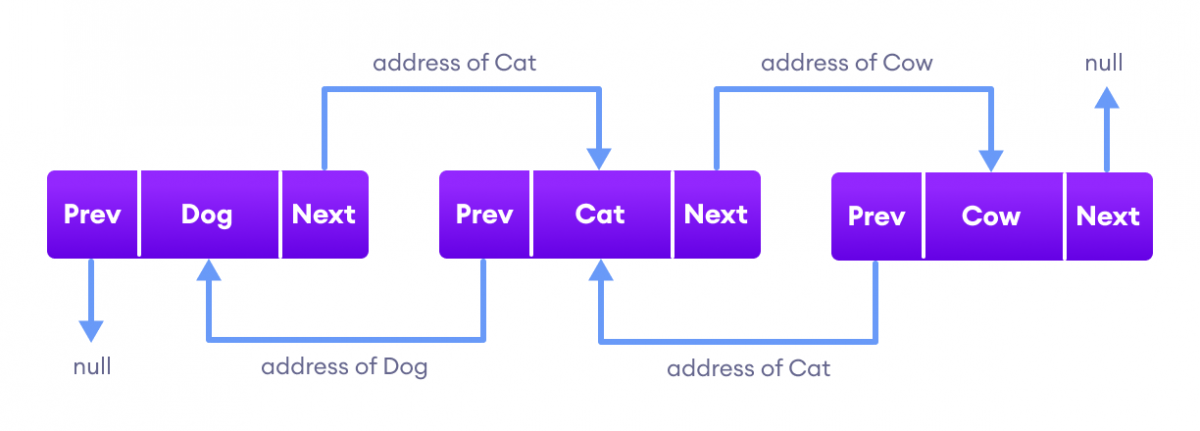【Java集合框架深度比较】:LinkedList与其他集合的性能差异
发布时间: 2024-09-11 12:54:25 阅读量: 60 订阅数: 37 


# 1. Java集合框架概述
Java集合框架为程序员提供了一套性能优化、高度抽象的接口和类,用于存储和操作对象集合。框架的最顶层是`Collection`接口,它代表了一组对象,即单列集合。而`Map`接口则代表了键值对集合,也就是我们通常说的双列集合。集合框架不仅包括实现这些接口的类,还包括比较器(Comparator)和迭代器(Iterator)等重要工具。
集合框架的主要目的有:
- 为解决不同类型的集合操作提供统一的接口。
- 降低学习和使用不同集合类的难度。
- 提供效率更高、功能更丰富的集合类实现。
在实际开发中,选择合适的集合实现可以提高程序的性能和可读性。例如,当需要保证元素唯一性时,可以选择`HashSet`;而需要保持插入顺序时,则`LinkedHashSet`可能更加合适。同样,`ArrayList`和`LinkedList`的选择也需要根据应用场景来决定。
```java
import java.util.*;
public class CollectionOverview {
public static void main(String[] args) {
// 示例:创建和使用ArrayList
List<String> list = new ArrayList<>();
list.add("Java");
list.add("is");
list.add("Awesome!");
// 示例:创建和使用HashSet
Set<String> set = new HashSet<>();
set.add("Java");
set.add("is");
set.add("Awesome!");
// 示例:创建和使用HashMap
Map<String, String> map = new HashMap<>();
map.put("language", "Java");
map.put("is", "Awesome!");
}
}
```
以上示例代码展示了在Java中如何使用`ArrayList`, `HashSet`和`HashMap`这三种常用的集合类。通过这个简单的例子,我们可以看到集合框架的易用性和灵活性。接下来的章节将深入探讨这些集合类的具体实现和它们的性能考量。
# 2. LinkedList的基本原理和特性
Java中的LinkedList是一个基于双向链表实现的集合。它不仅能实现快速的插入和删除操作,而且还能很好地保持元素的插入顺序。本章将深入探讨LinkedList的内部结构设计、操作方法以及性能考量,为理解和使用这个数据结构提供全面的视角。
## 2.1 LinkedList的数据结构
### 2.1.1 双向链表的结构特点
双向链表是由一系列节点组成的线性结构,每个节点都包含三个部分:存储数据的变量、一个指向前一个节点的引用和一个指向后一个节点的引用。这种结构允许双向遍历,即可以从头到尾,也可以从尾到头。在Java中,LinkedList就是通过这种结构实现的。相比于单向链表,双向链表的双向遍历特性大大增强了其灵活性,但也略微增加了空间复杂度。
### 2.1.2 LinkedList的内部节点设计
LinkedList的内部节点是通过一个私有的静态内部类Node来实现的。这个Node类包含三个属性:存储数据的element,指向下一个节点的next,以及指向前一个节点的prev。这样的设计使得LinkedList的每个节点能够快速地访问其前驱和后继节点,从而实现高效的增删操作。
```java
private static class Node<E> {
E item;
Node<E> next;
Node<E> prev;
Node(Node<E> prev, E element, Node<E> next) {
this.item = element;
this.next = next;
this.prev = prev;
}
}
```
## 2.2 LinkedList的操作方法
### 2.2.1 常规增删改查操作分析
LinkedList提供了丰富的API来进行元素的增加、删除、修改和查询。添加操作主要有add(E e),将元素添加到链表的尾部;add(int index, E element),将元素插入到指定位置。删除操作有remove(Object o),移除指定元素;remove(int index),移除指定位置的元素。查询操作是通过get(int index)方法实现的,返回指定位置的元素。
### 2.2.2 迭代器与快速失败机制
LinkedList提供了自定义的迭代器实现,它使用“快速失败”的机制。快速失败是指当多个线程对集合进行结构上的修改时,如果有其他线程正在遍历集合,将会抛出ConcurrentModificationException异常。这是为了防止在迭代过程中因为集合的结构被修改导致的不可预测的行为。
## 2.3 LinkedList的性能考量
### 2.3.1 时间复杂度分析
LinkedList的增删操作通常具有较好的性能,尤其是当操作发生在链表的两端时,时间复杂度为O(1)。然而,对于中间位置的增删操作,需要先遍历到指定位置,因此时间复杂度为O(n)。查询操作同样需要遍历到指定位置,所以时间复杂度也是O(n)。
### 2.3.2 空间复杂度分析
LinkedList的空间复杂度主要取决于链表中元素的数量。每个元素占用的空间包括其自身的数据部分以及两个指针(prev和next)。因此,对于n个元素,LinkedList的空间复杂度为O(n)。
## 总结
本章介绍了LinkedList的内部数据结构和设计,分析了其提供的基本操作方法,并且从时间和空间复杂度的角度探讨了其性能特点。下一章将对LinkedList与其他Java集合进行对比,进一步揭示其优势与不足。
# 3. LinkedList与其他集合的对比
在数据结构与算法的世界中,选择合适的集合对于开发效率和程序性能都至关重要。Java集合框架提供了多种不同的集合实现供开发者选择,每个实现都有其特定的优势和用途。在这一章节,我们将深入比较LinkedList与其他集合之间的差异,例如ArrayList、HashSet、LinkedHashSet、HashMap和LinkedHashMap等。这些比较将基于它们的底层数据结构、性能特点以及应用场景,以便于我们更好地了解它们的使用场景和选择它们的合适时机。
## 3.1 ArrayList与LinkedList的比较
ArrayList和LinkedList是Java中常用的两种线性数据结构,它们都是List接口的实现,因此在使用时提供了一系列相同的方法,如add(), remove(), get()等。然而,它们在内部实现上有着本质的区别,这导致了它们在性能表现上的差异。
### 3.1.1 底层数据结构差异
- **ArrayList**基于动态数组实现,每个元素都有一个固定的索引位置。这意味着ArrayList在内部维护了一个数组,用于存储元素,而数组的大小会随着元素的增加而动态调整。
- **LinkedList**则是基于双向链表实现,节点之间通过指针相互链接。每个节点包含三个部分:存储数据的元素、一个指向前一个节点的引用以及一个指向下一个节点的引用。这样就构成了一个能够快速进行插入和删除操作的数据结构。
### 3.1.2 性能对比(时间/空间)
在性能对比方面,我们可以从时间复杂度和空间复杂度两个角度来分析:
- **时间复杂度分析**:
- **ArrayList**:ArrayList在随机访问元素时具有优势,时间复杂度为O(1),因为可以通过索引直接访问数组中的元素。然而,当涉及到插入或删除操作时,ArrayList的时间复杂度可能会退化到O(n),因为它可能需要移动数组中后续所有元素来填补空出的位置或者为新元素腾出空间。
- **LinkedList**:LinkedList在插入和删除操作上更加高效,特别是在链表的头部或尾部进行操作时,时间复杂度为O(1)。这是因为它仅需要调整前后节点的指针即可完成操作。然而, LinkedList在随机访问元素时需要遍历链表,时间复杂度为O(n),因为它不能像ArrayList那样直接通过索引访问。
- **空间复杂度分析**:
- **ArrayList**:由于ArrayList使用数组作为其底层数据结构,它必须预留一定空间以应对数组动态扩展的需要。当数组容量不足时,会创建一个新的数组并复制所有元素,这可能会造成额外的空间消耗。
- **LinkedList**:LinkedList只需要存储实际存储的元素,节点间的指针仅占用少量空间。因此,LinkedList在空间上通常更为紧凑。不过,每一个节点额外存储的指针信息也会占用一定的空间。
## 3.2 HashSet与LinkedHashSet的对比
HashSet和LinkedHashSet是Java集合框架中提供的Set集合的实现,它们都实现了Set接口,提供了不包含重复元素的集合。然而,它们在内部实现和元素存储的顺序上存在差异。
### 3.2.1 集合中元素存储的顺序差异
- **HashSet**:HashSet内部使用HashMap来存储元素,元素被作为HashMap的键存储,而HashMap的值被设置为一个固定的虚拟对象。由于HashMap内部使用哈希表来存储键值对,元素的存储顺序是无序的。
- **LinkedHashSet**:LinkedHashSet继承自HashSet,并在内部使用了一个双向链表来维护元素的插入顺序。当有元素被添加到LinkedHashSet中时,它会在内部的HashMap中同时维护键值对和一个双向链表。这个链表记录了元素被插入的顺序,因此LinkedHashSet能够按照元素添加的顺序来迭代访问集合中的元素。
### 3.2.2 性能及应用场景差异
- **性能分析**:
- **HashSet**:HashSet在添加、删除和查找操作上具有常数时间复杂度O(1),这是因为其内部使用HashMap来实现。但是,它不保持元素的插入或访问顺序。
- **LinkedHashSet**: LinkedHashSet在性能上与HashSet相似,由于它内部也使用了HashMap来实现,所以添加、删除和查找操作同样具有O(1)的时间复杂度。然而,由于它维护了一个双向链表来记录元素顺序,所以在迭代访问元素时,LinkedHashSet会按照元素添加的顺序进行迭代,这是其额外的一个优势。
- **应用场景**:
- **HashSet**:适用于那些不需要元素有序且需要高效率的场景。
- **LinkedHashSet**:适用于需要保持插入顺序的场景,如实现LRU缓存。
## 3.3 HashMap与LinkedHashMap的对比
HashMap和LinkedHashMap都是Map接口的实现,它们允许存储键值对。然而,它们在元素存储顺序上存在明显的不同。
### 3.3.1 哈希表与链表结合的实现原理
- **Hash
0
0





